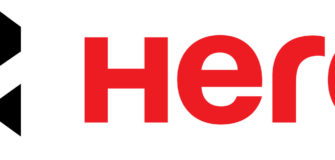The Indian Express: The abridged edition
Share
The abridged edition
Uthra G Chaturvedi
Depending on how you look, it can either be the corruption of a centuries-old sport or a brave new venture into the unknown, hoping to make it more accessible and fun. Either way, Hockey 9’s is an idea whose time has come.
India’s national sport — though there is no constitutional provision for the same — has gradually receded to the fringes of national consciousness. It makes no news routinely, and the only news is bad news. Rare victories, like the recent Asian Champions Trophy, see celebrations go overboard, triggering hype all over again about the “rebirth of Indian hockey”.
In the midst of all this, the game has moved on, and Indian team is reduced to evoking nostalgia for the days of dribbling wizardry. India’s presence in the international federation is zilch. For a country that makes news for its off-field misdemeanors, India’s constructive contribution to the development of hockey has been non-existent.
Hockey 9’s, in itself, is not something terribly radical. India experimented with bringing in the glitz and glamour and tweaking the rules during the Premier Hockey League with relative success, but it met a premature death. Hockey 9’s, which has less number of players on the field, making the game faster and more open, is more interesting. It puts emphasis on fitness and stamina, demands more control over the game from players and forces them to think out of the box to gain advantage.
There has been a lot of talk on how the modified rules for Hockey 9’s will benefit teams from the subcontinent. Given the traditional strength of India and Pakistan has been their skill set, there are expectations that less players on field, wider goalposts and more tolerance for fouls will mean more space to execute their moves. I agree only partially.
For one, it’s no longer the absolute truth that subcontinental players are more skilful than the rest. The best players — whether it is Teun de Nooijer in Holland, Santi Freixa in Spain, Jamie Dwyer in Australia or the Mueller brothers in Germany — are all more skilful, and a delight to watch. On the upside, we have many more players with similar skills as a team, which means more players to run circles around the opposition.
Second, more open spaces mean more and harder running, which requires more stamina. Fitness has always been valued in the West but not here. It’s only now that Indian and Pakistan teams have started taking fitness drills seriously and treating their bodies with more respect. It will still take time to match up to the rest. Upside: scope for Indians and Pakistanis to work their magic and showcase their dribbling to get out of tricky situations — like it is expected to do.
Third and most important, with the new format putting the onus of thinking their way out of trouble on players, it has become imperative for both players and coaches to get out of the spoon-feeding mindset. For long, the biggest hurdle for Indian hockey teams has been the chopping and changing of coaching styles, leaving players confused. This was mainly because players have never been expected to give their own inputs to a game, they have seldom been sought out for solutions or to think and execute an alternative plan. India coach Michael Nobbs has started a process that forces players to speak out and give suggestions. This will will test that effort.
The Europeans and Australians, meanwhile, have open sessions where players and coaches exchange ideas. Ric Charlesworth often breaks his Australian team into two and puts them in a game situation with no instruction except to win — forcing the players to work out their own strategies.
Any reference to hockey evokes images of eight Olympic golds and the wiry frame of Dhyanchand, barefoot, hair slicked back and controlling the ball with a stick, past a multitude of players. Hockey 9’s is an attempt to break that image and produce a more flashy icon, something that can grab the nano-second attention span of the youth today.


